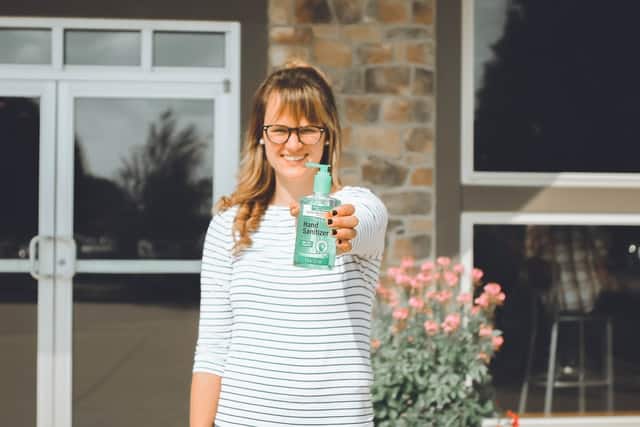Which Is Better, Hand Sanitizer or Washing Hands?
Both hand sanitizer and hand washing kill bacteria and viruses on our hands. Hand sanitizer is recommended for use throughout the day in medical clinics, and hand washing is recommended for most of us at home, with steady access to a sink and soap. Both are needed. And here’s why:Positives of Hand Sanitizer
The CDC recommends that medical providers use hand sanitizer instead of handwashing throughout the day, except in cases of using the restroom, before and after eating, and when their hands are visibly dirty.
Specifically, they ask that medical providers, and actually all of us, use hand sanitizer often.
But this isn’t any new information. Long before the outbreak of COVID-19, we were advised:
“The CDC continues to recommend the use of alcohol-based hand rub (ABHR) as the primary method for hand hygiene in most clinical situations1. ABHR effectively reduces the number of pathogens that may be present on the hands of healthcare personnel after brief interactions with patients or the care environment. In addition, frequent use of ABHR formulated with emollients is less damaging to the skin than frequent hand washing. This factor, along with ease of use and greater access, leads to greater overall compliance with the use of ABHR than handwashing with soap and water. Hands should be washed for at least 20 seconds with soap and water when visibly soiled, before eating, and after using the restroom.” —Frequently Asked Questions about Hand Hygiene
Hand sanitizer is portable, accessible, and quick to use, making it a convenient way for us to help slow the spread of any viruses and bacteria.
Negatives of Hand Sanitizer
The main downside of hand sanitizer is that whatever dirt or grime is on your hands will stay on your hands instead of being washed away with water. Washing with soap and water is preferred when it is accessible, for most of us staying at home with accessibility to soap and water.
For a more overall, thoroughly clean, using soap and water kills bacteria while also rinsing away whatever debris has gathered on your hands. Bacteria are killed but not physically removed from the hands from the use of hand sanitizer.
READ MORE: How Do I Prepare For A Pandemic Outbreak?
So What Type of Hand Sanitizer Should I Get?
The specific type of hand sanitizer you purchase should contain either greater than 60% ethanol or 70% isopropanol as active ingredients. (Both of these active ingredients are types of alcohol.) Benzalkonium chloride, another active ingredient, is also appropriate to use, as deemed by the FDA. However, preliminary research suggests that benzalkonium chloride is less reliable in preventing the spread of coronavirus than either of the other alcohols, making alcohol the better active option in hand sanitizers for now.Positives of Hand Washing
Hand washing is critical for killing bacteria and viruses and washing them away down a drain. The CDC recommends washing hands with soap and water often, when we are at home, throughout our day, before and after eating, after touching our faces, after using the restroom, and after sneezing or coughing.
As one physician put it simply: “Hand sanitizer may kill viruses and certain bacteria, but it does not ‘clean’ your hands like soap and water do. Sanitizer doesn’t remove actual dirt and debris. Soap kills germs, binds them, and helps physically remove them, with the water, off your skin and down the drain.”
Therefore, hand-washing can’t be cut out just because of the convenience of hand sanitizer. There will be cases when we need actual soap and water to clean our hands properly.
Negatives of Hand Washing
The most prominent negative of handwashing is that it is not as convenient. You need clean, running water and soap in order to wash your hands. In addition, it is not sustainable to wash your hands 50 times per day without your skin suffering.
What Type of Soap Should I Use?
While many people think that purchasing “antibacterial” soap is superior to regular soap, the jury is still out with which one works most effectively. With everything that we know to this point, purchasing and using any regular soap is just as effective as antibacterial soap, although you can certainly buy antibacterial soaps as well.Proper Technique Matters
With both hands sanitizing and hand washing, the technique is critical and can make a big difference between either some or all of the germs on our hands being cleaned.
For hand washing, the CDC recommends that we wash our hands for 20 seconds, scrubbing the soap first on our palms and then between each of the fingers.
For hand sanitizer, the CDC recommends rubbing first between the palm of our hands and then continuing to rub between our fingers and on our palms until the hand sanitizer is completely dry.
READ MORE: Besides A Pandemic, What Else Should I Prepare For?

